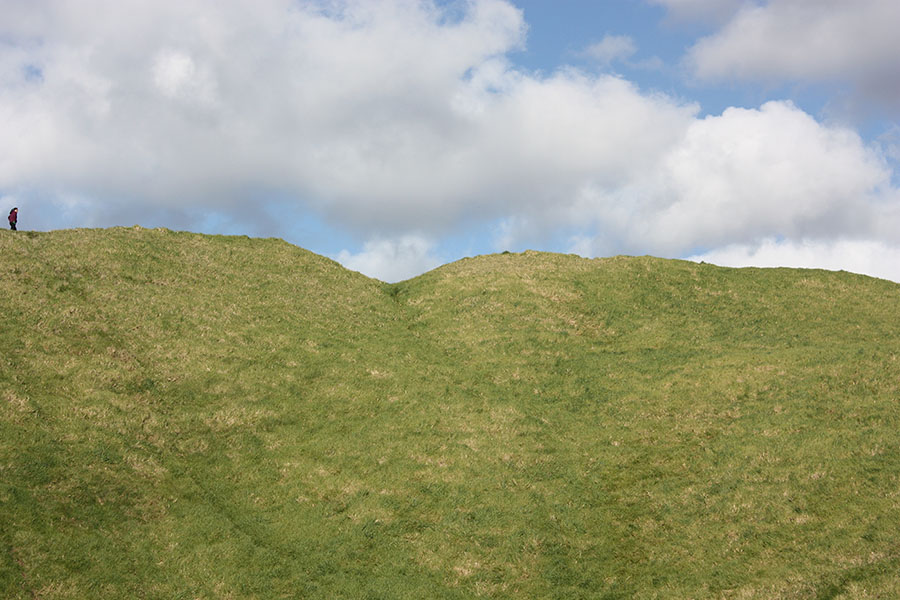

On the eastern side of the crater rim the ancient surveyor-astronomers cut this trench, which can be seen for miles from vantage points across the Auckland Isthmus. It represented the equinox rise position, as witnessed from Mount Albert mound observatory 7-miles to the west and the equinox sunset position from Stockade hill observatory, 5-miles to the east. Again the preoccupation of the ancient astronomer-surveyors was to return fire to the extinct volcano on the equinox days.
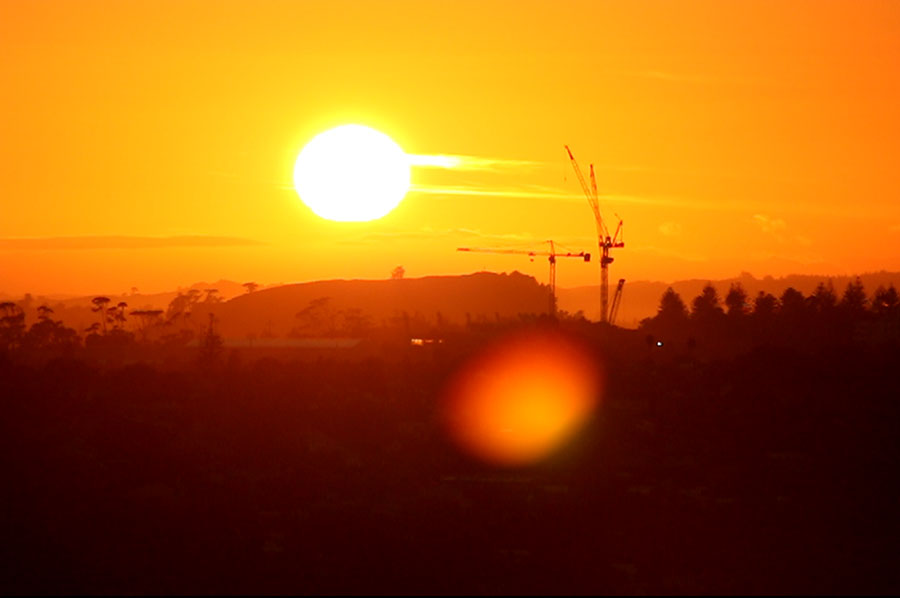
In this magnified photo taken from the Mount Albert summit mound, the equinoctial sun has just cleared the Coromandel Ranges, which sit slightly higher than Mt Wellington, and hovers directly above the trench indent. When the ancient residents of Mount Albert witnessed this precise conjunction, they knew it was the equinox day.
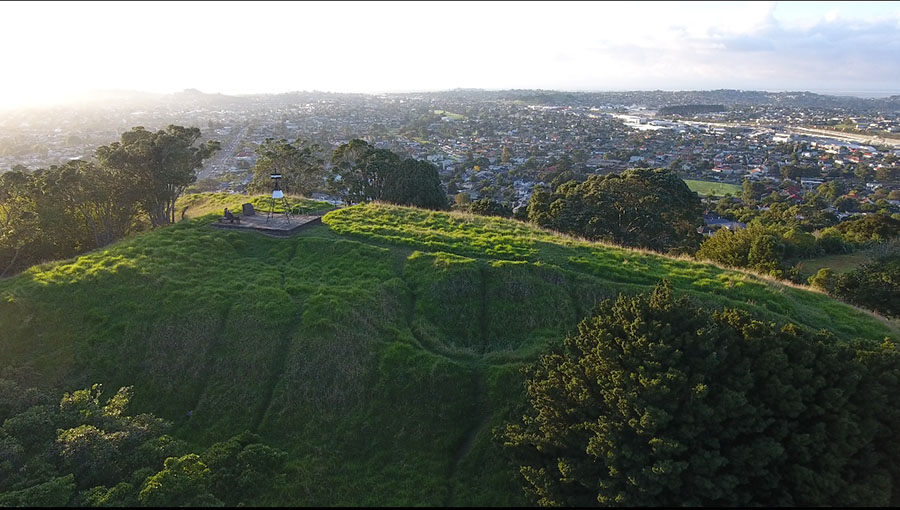
The summit mound of Mt Albert, upon which sits a modern-day trig, is seen to be bathed in equinox sunlight. Adjacent to the trig and now set in concrete is an obelisk, which, by all accounts, has always been there throughout colonial history. The targeted outer marker for the equinoctial sunrise is the crest trench of Mt. Wellington.
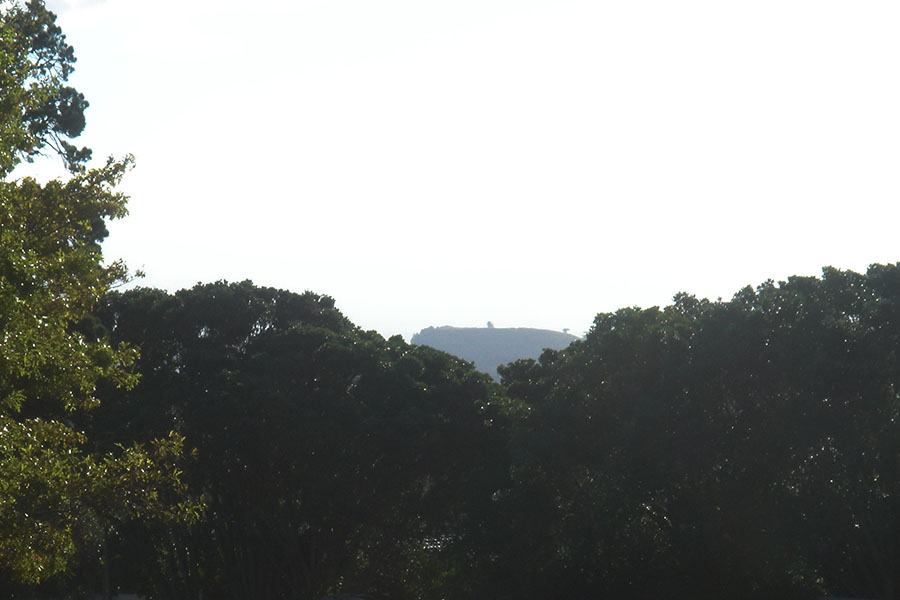
Five miles east of Mt. Wellington is stockade hill, a high point of Howick township where, in the 1850s, British defensible troops and engineers had to build a military redoubt to ward off possible attacks from Maori warriors. The engineer’s report, read by Howick historian Andrew Adams, noted that boulders had to be removed from the hill crown as excavation works commenced. From that position on the hill the sun will be seen to come down and touch the Mt. Wellington trench on the day of the equinox, re igniting the extinct volcano in fiery splendor twice a year.
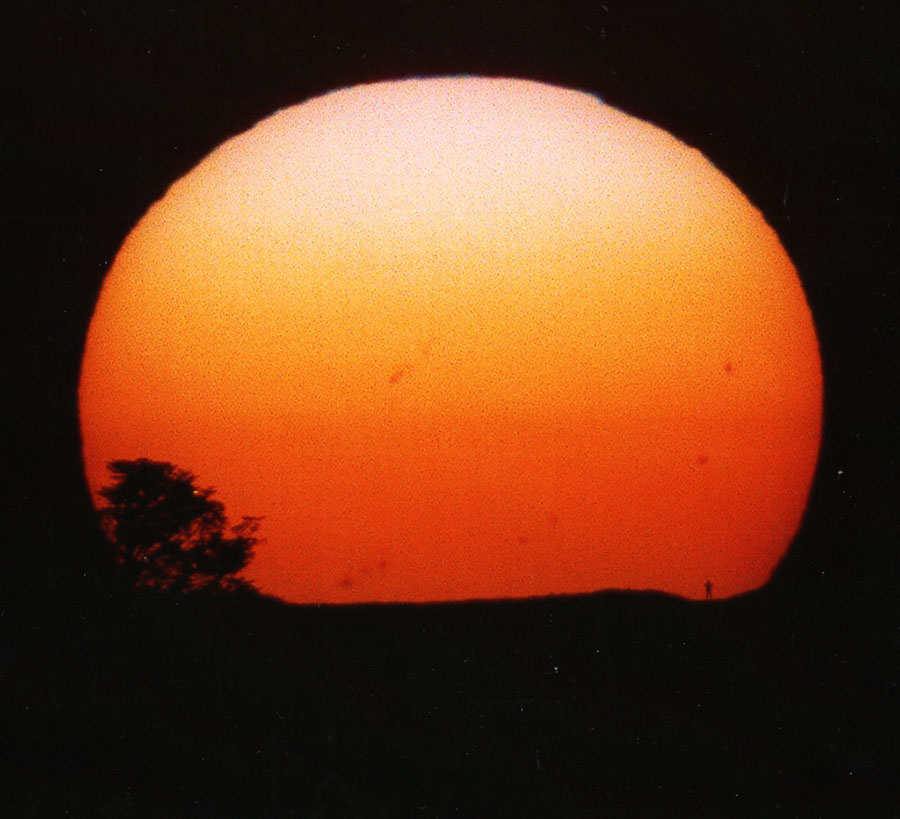
A television film crew was invited to witness and film the equinox spectacle from Stockade Hill and had one of their personnel stand on the platform bridge that now crosses the trench. Whereas the trench “V” was once far more vivid, the platform has obscured its lower half. The bottom of the sun orb landed squarely on the individual’s position before sinking to the left into the volcanic crater. The media censors later decided against airing the controversial spectacle and this researcher had to purchase the highly magnified photo of the event at quite some considerable cost.
More recently, Maori Television filmed the same event, but never showed the results to public, as that would be counter-productive to the official narrative.
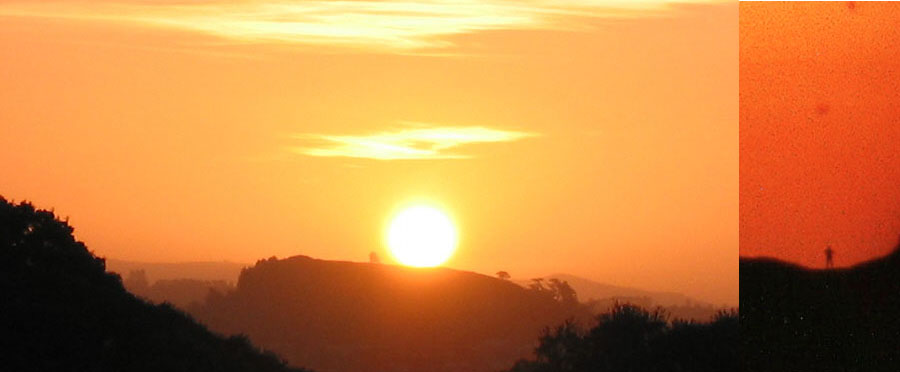
Despite this researcher’s frequent (but unfortunate) involvement with the media, either at their request for interviews or by alerting them concerning anomalous archaeological sites and such things as solar spectacles that would be of interest to the general public, I have mostly found them to be hostile. Rather than simply considering the intriguing, compelling information and analysing it scientifically for what it truly is, their modus operandi is, invariably, ad hominem attacks and attempts at character assassination or public humiliation of the messenger.
None of the “good stuff” makes it past the censors, but ends up as the inconvenient, disposable footage on the editing room floor. Besides being totally deceitful in misrepresenting everything shown or said when the final cut is made they’re also a stingy, mean-spirited lot, who won’t even buy you a cup of coffee after engaging you for a full day’s outing at your own expense.
New Zealand has a huge story to tell about its former megalithic inhabitants who wrought enduring, great works across the entire landscape, but they are an “unmentionable” people with a censored history.
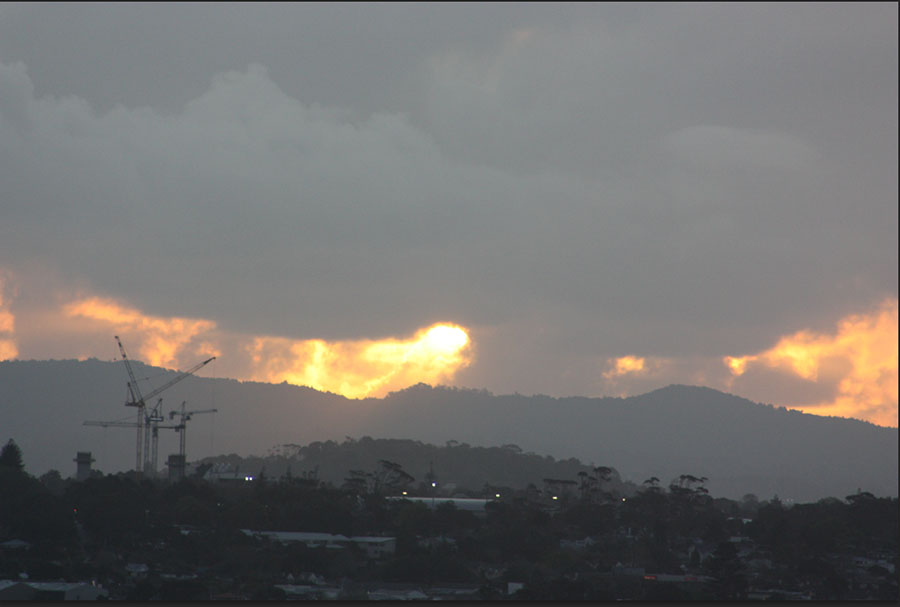
Of course the ancient people in residence around Mount Wellington (Maungarei) could sight back from the crest trench to the position of Mount Albert and use that hill as a targeted outer marker for the equinoctial sunset. Although obscured by cloud in this magnified view, the sun alights nicely within the dip in the Waitakere Ranges directly above the high point trig mound on Mount Albert, providing a perfect fix on exactly which day the moment of equinox occurs.
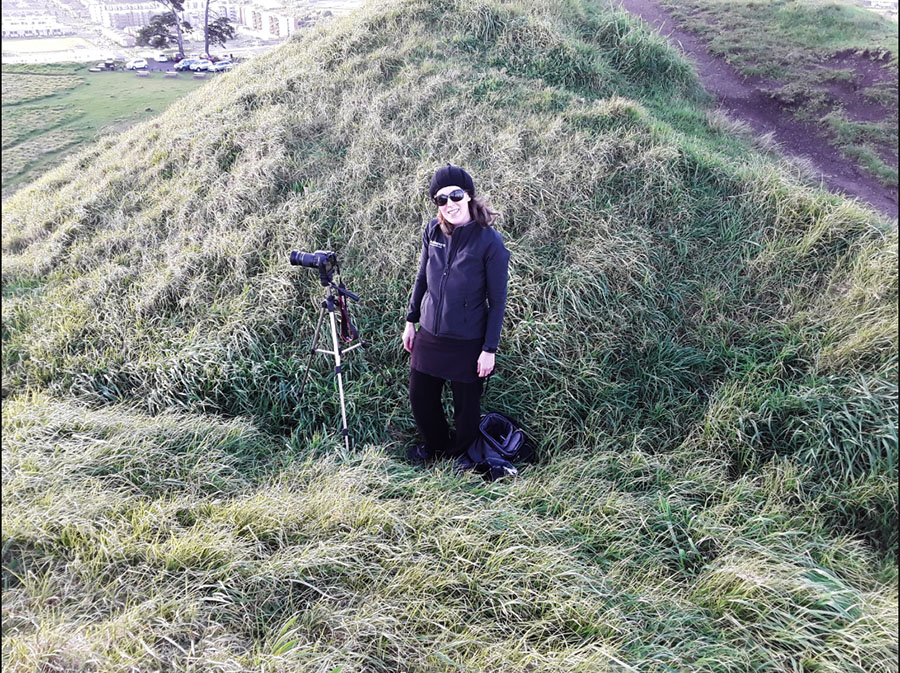
Capturing the equinox sunset into the Waitakere Ranges dip from the Mount Wellington crest trench. To the right side of the picture is seen the raised pathway that leads onto a wooden platform, bridging the trench and this modern innovation has diminished the view of the, once, far more conspicuous “V”, as seen from distant locations.